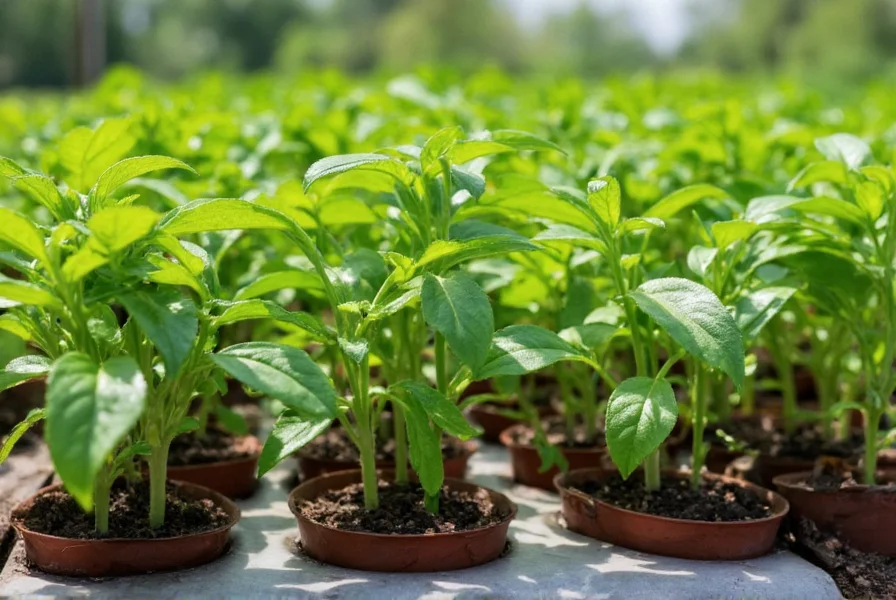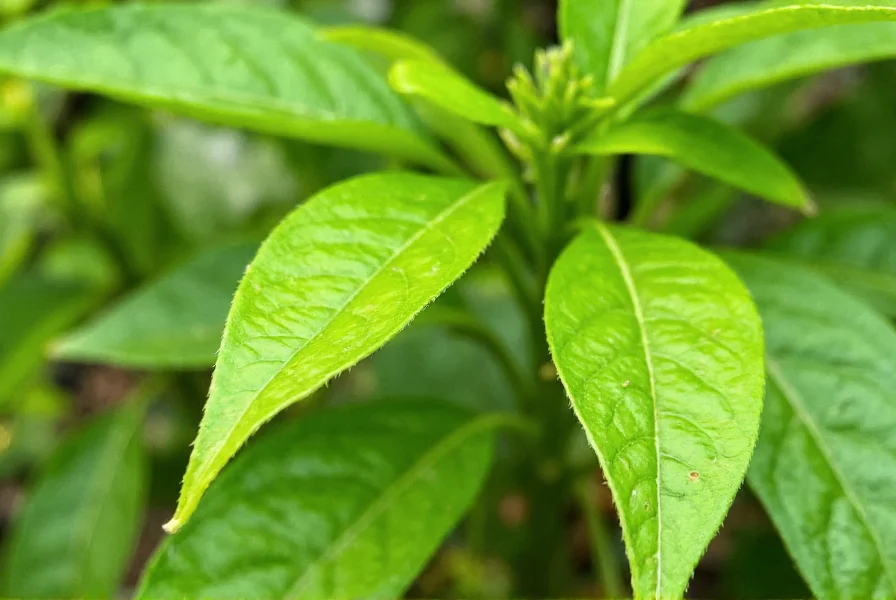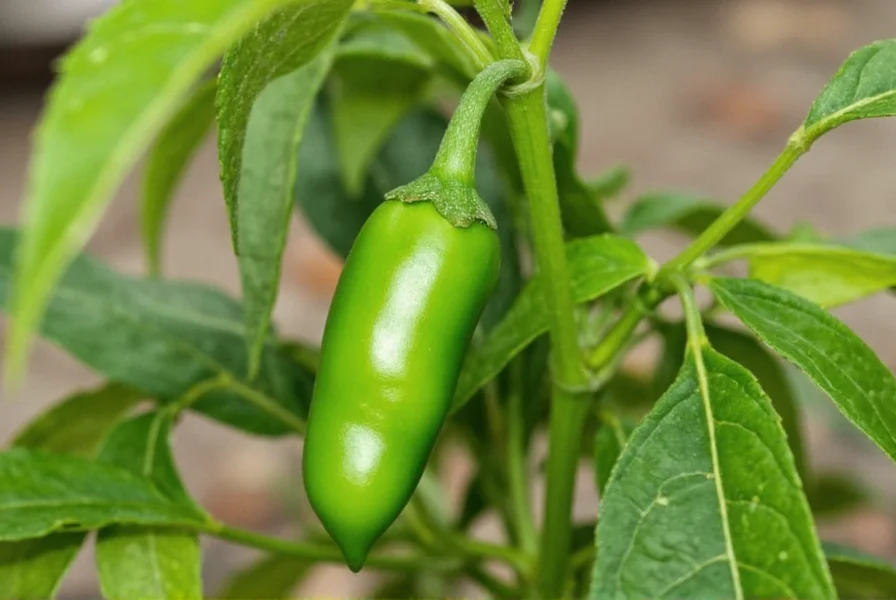Pepper plants rank among the most versatile and rewarding vegetables for home gardeners. Whether you're cultivating sweet bell peppers for salads or fiery habaneros for homemade hot sauce, understanding their specific needs ensures bountiful harvests. This comprehensive guide covers everything from seed selection to harvest, drawing on decades of horticultural research and practical growing experience.
Understanding Pepper Plant Varieties
Pepper plants encompass over 30 species and thousands of cultivars, broadly categorized by heat level and usage. The Scoville scale measures pungency, ranging from zero units for sweet bells to 2,000,000+ for Carolina Reapers. Successful gardeners match varieties to their climate and culinary preferences.
| Pepper Type | Scoville Units | Days to Maturity | Best Growing Conditions |
|---|---|---|---|
| Bell Peppers | 0 | 65-85 | Consistent moisture, 70°-85°F temperatures |
| Jalapeños | 2,500-8,000 | 70-80 | Full sun, slightly drier conditions |
| Habaneros | 100,000-350,000 | 90-120 | High heat, well-drained soil |
| Sweet Banana | 0-500 | 60-75 | Regular watering, moderate fertility |
Optimal Planting Conditions for Pepper Plants
Successful pepper cultivation begins with proper planting conditions. These tropical natives require warm soil temperatures—never plant outdoors until nighttime temperatures consistently exceed 55°F (13°C). The best soil for pepper plants combines loamy texture with organic matter content of 3-5%. Amend garden beds with compost before planting to improve drainage and nutrient availability. Raised beds prove particularly beneficial in cooler climates, warming faster in spring.
When starting pepper plant seeds indoors, maintain soil temperatures at 80°-90°F (27°-32°C) for optimal germination. Use seedling heat mats if necessary, as peppers germinate poorly below 70°F (21°C). Transplant seedlings into 3-4 inch pots once they develop their first true leaves, taking care not to damage their delicate root systems.

Essential Pepper Plant Care Practices
Consistent care determines whether your pepper plants produce modest or spectacular harvests. The pepper plant watering schedule requires careful attention—maintain even soil moisture without waterlogging. Drip irrigation systems work best, delivering water directly to roots while keeping foliage dry. During fruit set, provide 1-2 inches of water weekly, increasing during extreme heat.
Organic pepper plant fertilizer applications should follow this schedule: side-dress with balanced organic fertilizer (5-5-5) when plants reach 6 inches tall, then apply calcium-rich amendments when flowers appear to prevent blossom end rot. Avoid high-nitrogen fertilizers during fruiting, which promote leafy growth at the expense of peppers.
Troubleshooting Common Pepper Plant Problems
Even experienced gardeners encounter pepper plant problems. Blossom drop occurs when nighttime temperatures exceed 75°F (24°C) or drop below 60°F (15°C). Prevent this by using shade cloth during heat waves and row covers during cool spells. Aphids and spider mites frequently attack pepper plants; control them with insecticidal soap sprays applied early morning.
Pepper plant diseases like bacterial spot and tobacco mosaic virus require immediate action. Remove affected leaves promptly and avoid working with plants when wet. Rotate crops annually to prevent soil-borne diseases. For organic gardeners, copper fungicides provide effective treatment for many common fungal issues.

Harvesting and Preserving Your Pepper Crop
Knowing when to harvest peppers maximizes flavor and encourages continued production. Most varieties reach peak flavor when fully colored, though you can pick them earlier for milder heat. Use sharp scissors to cut peppers from the plant, leaving a small stem attached. Never pull peppers off, as this damages the plant.
For continuous harvests throughout the season, pick peppers regularly once they reach usable size. Sweet peppers develop deeper flavor when allowed to ripen fully to red, yellow, or orange. Hot peppers generally increase in heat as they mature and change color. Store harvested peppers in perforated plastic bags in the refrigerator crisper drawer for up to three weeks.
Frequently Asked Questions
How often should I water pepper plants during hot weather?
During periods of extreme heat (above 90°F/32°C), water pepper plants deeply every 2-3 days. Check soil moisture by inserting your finger 2 inches deep near the plant base—if dry, it's time to water. Container-grown peppers may require daily watering in hot conditions. Always water early morning to reduce evaporation and prevent fungal diseases.
Can I grow pepper plants in containers successfully?
Yes, growing peppers in containers works well with proper planning. Choose pots at least 5 gallons (20 liters) for most varieties, with adequate drainage holes. Use high-quality potting mix rather than garden soil. Container-grown pepper plants require more frequent watering and feeding—apply liquid organic fertilizer every 2-3 weeks. Place containers where they receive 6-8 hours of direct sunlight, and rotate pots periodically for even growth.
Why are my pepper plant leaves turning yellow?
Yellowing pepper plant leaves typically indicate one of three issues: overwatering (most common), nitrogen deficiency, or root-bound conditions. First check soil moisture—if consistently wet, reduce watering frequency. If soil moisture is appropriate, apply a balanced organic fertilizer. For container plants, yellowing often means the plant needs repotting into a larger container. Avoid removing more than 30% of yellowed leaves at once to prevent additional stress.
What's the best companion plant for pepper plants?
Basil makes an excellent companion plant for pepper plants, repelling thrips and aphids while improving flavor. Other beneficial companions include onions, which deter pests, and marigolds, which suppress nematodes. Avoid planting peppers near fennel or kohlrabi, which inhibit their growth. In greenhouse settings, grow peppers alongside tomatoes but maintain adequate spacing to prevent disease transmission.
How do I overwinter pepper plants for next season?
To overwinter pepper plants, cut them back by one-third before first frost and transplant into containers. Place in a sunny window or under grow lights where temperatures stay between 60°-70°F (15°-21°C). Water sparingly—only when the top inch of soil dries out. In late winter, prune remaining branches and increase watering as new growth appears. Begin fertilizing monthly when active growth resumes, then transplant outdoors after last frost date.











 浙公网安备
33010002000092号
浙公网安备
33010002000092号 浙B2-20120091-4
浙B2-20120091-4